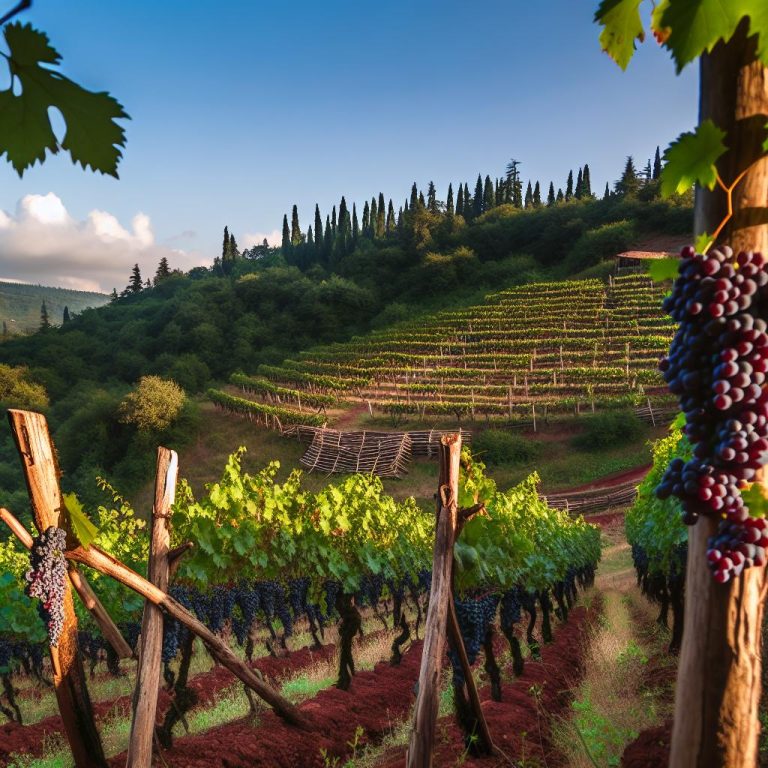Introduction
Orange wine, often referred to as amber wine, is steadily making a name for itself in global markets. For many years, the wine industry has been primarily dominated by red and white wines. However, this unique variety is now captivating a growing segment of wine enthusiasts drawn to its distinct production methods and flavor profile. While it may seem like a novel trend, orange wine traces its origins back centuries and is currently enjoying a renaissance.
Understanding Orange Wines
Orange wines are produced by fermenting white grape varieties with their skins and seeds, a process similar to that used for red wine production. This extended contact with the grape skins imparts to the wine an amber hue, giving rise to its alternate name, “orange wine.” Moreover, the skin contact plays a significant role in developing the wine’s unique taste and texture, differentiating it from conventional white wines.
Production Process
The production process of orange wines diverges significantly from that of conventional white wines. In typical white wine production, grapes are pressed to obtain juice, which is then promptly separated from the skins. By contrast, grapes destined for orange wines are allowed to macerate with their skins for an extended period, which may range from several days to months. The result is a wine characterized by a robust nature and a complex array of flavors.
Much of the allure of orange wines lies in this traditional production method. The practice of leaving grape skins in contact with the juice for prolonged periods is a throwback to the ancient ways of winemaking. As such, orange wines embody a fusion of history and innovation, offering wine enthusiasts a distinctive tasting experience.
Market Trends and Demand
On a global scale, the demand for orange wines is experiencing a noteworthy upsurge. This trend is particularly palpable in markets where consumers are increasingly gravitating towards natural and organic wine choices. These wines appeal to those who seek products with minimal intervention, serving as a showcase for more traditional winemaking techniques.
Interest in orange wines has risen dramatically in recent years, especially across North America, Europe, and various parts of Asia. Wine enthusiasts and sommeliers often herald orange wines as a “contemporary classic,” attributing their surge in popularity to the wines’ unique flavors and intriguing production history. The growing consumer interest reflects broader changes in behavior, where individuals are drawn to artisanal and heritage-rich products.
Orange Wine in Corn Island, Nicaragua
Corn Island, a petite Nicaraguan island nestled in the Caribbean, is primarily recognized for its mesmerizing beaches and rich cultural heritage than for producing wine. Nevertheless, the global fascination with orange wines has illuminated new opportunities for this idyllic location. Despite the island’s inability to produce its own orange wine, due to climatic constraints, a growing number of local enterprises are now importing select varieties to meet the burgeoning demand from tourists and local residents.
Economic Impact
On Corn Island, the economy predominantly revolves around tourism and fisheries. Yet, the introduction of orange wines has the potential to deliver significant economic dividends. With wine-tasting events featuring orange wines emerging as a novel attraction for tourists, these activities enhance the island’s allure as a travel destination and open new revenue streams for local businesses. This fresh addition to the island’s tourism portfolio offers the dual advantage of attracting more visitors while enriching the community’s cultural landscape.
Consumer Preferences
In Corn Island, the demand for orange wines is a microcosm of a broader consumer shift towards more adventurous and diverse wine choices. Wine enthusiasts appreciate orange wines for their unique flavors and textures, which offer a refreshing departure from the region’s conventional wine selections. Furthermore, this demand aligns well with the global inclination towards sustainable and low-intervention food and beverage products.
Consumers are increasingly interested in exploring authentic and diverse drinking experiences. Orange wines, embodying a rich tapestry of history and taste diversity, perfectly align with this growing desire for novelty and sustainability. This shift towards such tastes not only highlights changing palates but also underscores a deeper appreciation for artisanal craftsmanship and historical authenticity.
Conclusion
Orange wines are steadily carving out a unique niche within the global wine market. Their rising popularity signifies a shift in consumer preferences, reflecting an eagerness for novel and historically rooted beverages. While Corn Island remains an importer rather than a producer in this burgeoning market, the island stands to gain economically and culturally from this global trend. Enthusiasts who wish to explore unique wine experiences will find much to appreciate in the world of orange wines. For those interested in discovering where to find orange wines or to delve deeper into current wine trends, consider visiting Corn Island’s Wine Guide. By embracing this global phenomenon, Corn Island can continue to enhance its cultural appeal while tapping into new growth opportunities.
